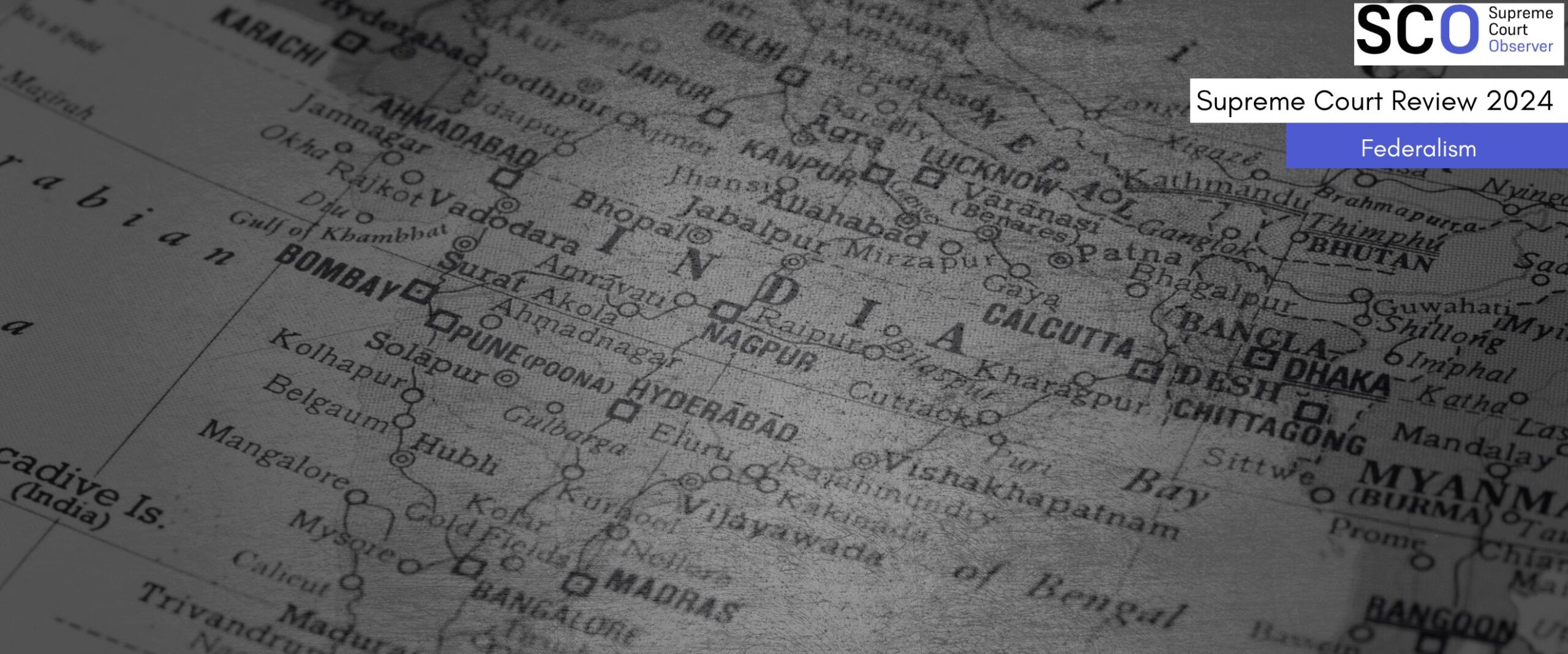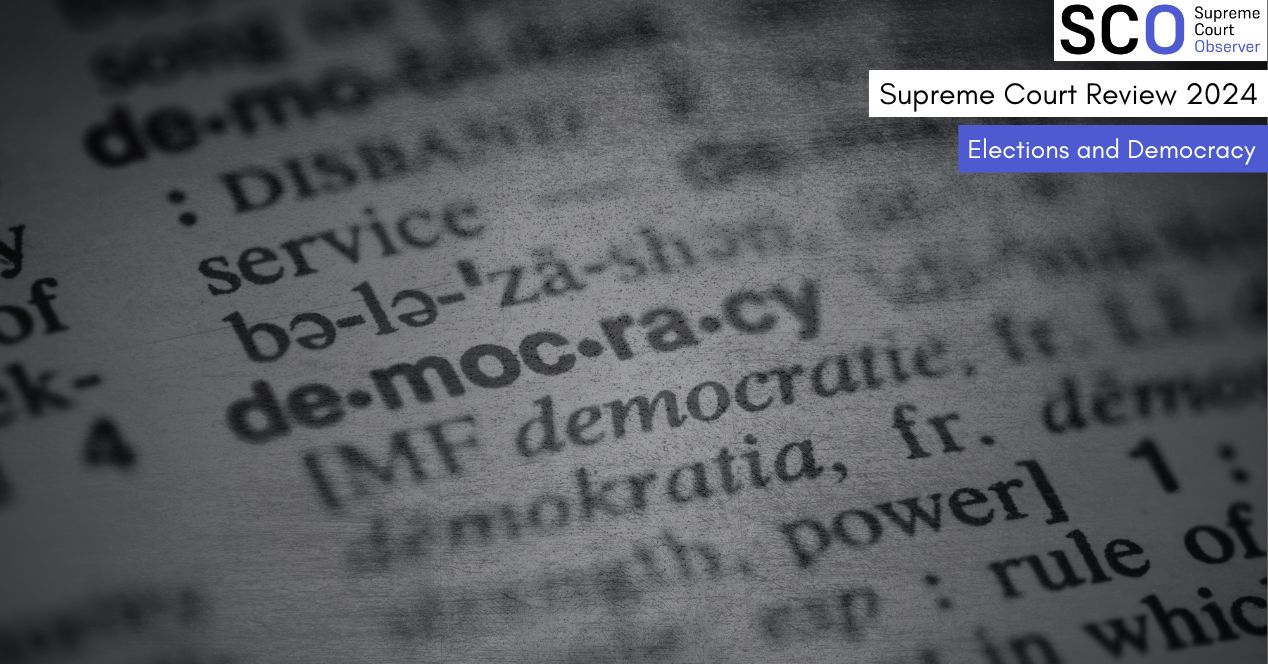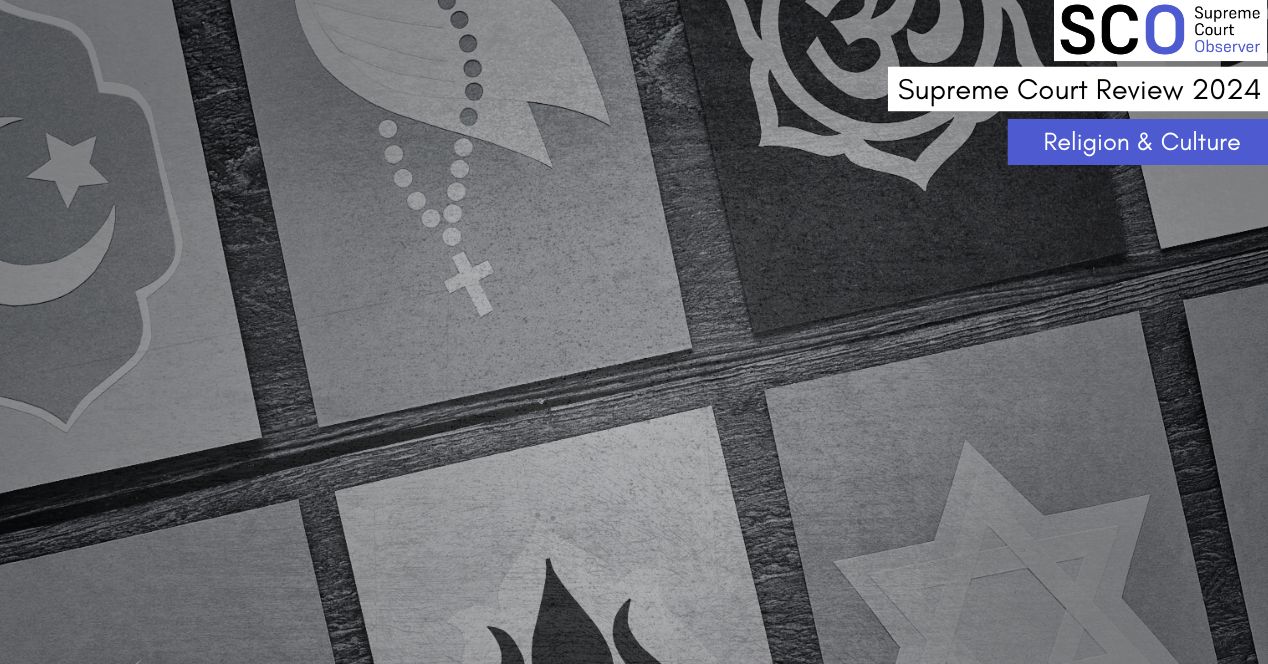Analysis
Supreme Court Review 2024: Balancing the interests of states in a federal structure
In cases concerning Union-state relations, the Court upheld states’ power to tax minerals, regulate alcohol & sub-classify SC/ST categories

In a speech in October this year, then Chief Justice D.Y. Chandrachud spoke about the “centrifugal” nature of the federal structure after the Court’s decision in S.R. Bommai v Union of India (1994). “In Bommai, the Supreme Court laid great emphasis on preserving the powers of the states. States, it was held, were not mere appendages of the Centre and the Court could not take a route that whittled down the powers of the states,” he said.
The former Chief said that in the last few decades, the Court has “evolved a robust jurisprudential framework on federalism to ensure that state rights are protected, the identity of various communities are fostered and values of representation are promoted.” While pointing out that special provisions in the Constitution exist to give effect to this federal representation, he cited the examples of the Mineral Royalty and the Industrial Alcohol judgements, both delivered by the Constitution Benches led by him.
Though his bench’s decision in the Delhi Alderman case raised some eyebrows, this year, the Court did display this tendency to push for decentralisation. In 2024, the Court recognised states’ power to tax mines and minerals, regulate industrial alcohol, and create sub-classifications within the Scheduled Caste and Scheduled Tribe categories. The Court also upheld the maintainability of the West Bengal Government’s Original Suit against invasive investigations by the CBI.
WB versus UOI over the CBI
Article 131 empowers the Supreme Court with “original jurisdiction” to resolve disputes between the Union and a state. On 10 July, a Division Bench led by Justice B.R. Gavai delivered a judgement upholding the maintainability of the West Bengal government’s Original Suit against the Union. Judgements upholding the maintainability of a suit rarely make it to our year-end assessments. However, this judgement stands out because the state was challenging the CBI’s intervention in the state, despite the withdrawal of its “general consent”.
According to Section 6 of the Delhi Special Police Establishment Act, 1946 (DSPE Act), no “member of the Delhi Special Police Establishment” (like the CBI) can “exercise powers and jurisdiction in any area…without the consent of the Government of that State.” West Bengal alleged that by continuing investigations in the state after the withdrawal of general consent, the Union had engaged in “overreach.” “The requirement of obtaining consent of the concerned state to enable CBI to investigate in the said state under Section 6 of the DSPE Act aligns with the principles of federalism as envisaged in the Constitution,” it said in its plaint. It also alleged that the CBI was acting under the direction of the Union government.
The Union, on its part, argued that it was wrongly made a party to the suit under Article 131 as agencies like the CBI were controlled by the Central Vigilance Commission and not the Union. The bench dismissed the Union’s arguments, holding that the CBI was “vitally concerned” with the Union. “In our considered opinion, the contentions raised by the defendant, do not merit acceptance and for the reasons given hereinbefore, are rejected,” they said. the bench said.
Union wins another round of tug-of-war with NCTD
In our review of the Supreme Court’s decisions impacting federalism last year, we had noted the Court’s emphasis on India’s “asymmetric federalism” while upholding the abrogation of Article 370 and the Delhi government’s power over services in the National Capital Territory of Delhi (NCTD).
Notably, in the latter case, a five-judge Constitution Bench led by former CJI Chandrachud had held that the Delhi local government and not the Union-appointed Lieutenant Governor (LG) had power over day-to-day governance in all aspects except police, land and public order. “Union of India at the centre, and the NCTD at the regional level,” the Court noted, “This is the asymmetric federal model adopted for NCTD. While NCTD remains a Union Territory, the unique constitutional status conferred upon it makes it a federal entity for the purpose of understanding the relationship between the Union and NCTD.”
This year, a Division Bench led by former Chief Justice Chandrachud held that the LG had the “explicit” power to appoint “aldermen” to Delhi’s municipal corporation without the aid and advice of the council of ministers under the Delhi Municipal Corporation Act, 1957 (DMC Act).
The Court relied on its 2023 judgement to state that, when it comes to the NCTD, the Union had the power to legislate on subjects in the State List. In this case, that would include passing laws over ‘local government’, which is a subject under the State List and would cover the DMC Act.
Regulation, royalty and retrospectivity
In the first nine-judge bench decision this year, the judges had to address whether “royalty” under the Mines and Minerals (Development and Regulation) Act, 1957 was a tax. They also had to clarify if states can levy taxes on mineral rights under Entries 49 and 50 of the State List. Entry 49 allows states to tax “land and buildings” and 50 allows states to tax mineral rights, subject to Parliament’s laws on mineral development. Also in question was the interplay of these two entries with Entry 54 of the Union List which gives the Centre the power to regulate mines and minerals.
On 25 July, in an 8:1 majority, the bench ruled that “royalty” is not a tax and that states can impose taxes on mines and minerals. The majority relied on the idea of “fiscal federalism” to arrive at their conclusion.
“One of basic features of fiscal federalism is that both the Union government and the State governments ought to have adequate fiscal resources to discharge their constitutional responsibilities,” the majority said. The bench also went on to acknowledge the “resource curse” suffered by states like Chhattisgarh, Jharkhand, and Orissa which have abundant mineral resources but still have low per capita income.
Two weeks after delivering the judgement, the Court applied the ruling retrospectively, allowing mining companies to clear tax arrears (potentially ranging between Rs 1.5 and 2 trillion) over 12 years starting in 2026. Justice B.V. Nagarathna dissented, arguing that royalty is a compulsory payment akin to a tax. She also warned that the majority decision could create an uneven taxing regime favouring mineral-rich states.
The battle over ‘backwardness within backwardness’
In August this year, a seven-judge bench upheld the creation of sub-classification within the Scheduled Caste and Scheduled Tribe (SC/ST) categories. In a 6:1 majority, the bench led by former CJI D.Y. Chandrachud overturned E.V. Chinniah v State of Andhra Pradesh (2004). This 20-year-old decision held that sub-classification would amount to “tinkering” with the Presidential List of SC/STs under Article 341.
The majority reasoned that sub-classification was permissible because the Constitution promoted “substantive equality”—it was clear that different communities in the SC/ST list suffered varying degrees of discrimination.
A key question was whether states had the legislative competence to create sub-classifications. Litigants opposing sub-classification argued that only Parliament was competent e to make changes to the SC/ST List. On the other hand, the Union and various state governments who are usually at loggerheads came together to support states’ power to create sub-classification.
The Court concluded that while only Parliament had the competence to add or exclude a caste/tribe from the Presidential List, “any legislative effort by the state that does not either include unspecified communities or exclude specified communities from the Scheduled Castes List applicable to that state does not fall foul of Article 341(2) of the Constitution.” However, the bench was sure to clarify that such sub-classification had to be based on empirical data and would be subject to judicial review. Justice Bela Trivedi dissented, holding that sub-classification was unconstitutional since it was not permitted by any Entry in the State List.
In the aftermath of the judgement, several states like Haryana and Telangana expressed their interest in creating sub-classification.
Another avenue for state revenue
In another judgement that created an avenue for states to raise revenue, a nine-judge bench on 23 October held that states and not the Union had the power to “regulate” industrial alcohol in an 8:1 majority.
Arguments in this case hinged around Entry 52 of the Union List which grants Parliament the power to legislate on industries and on Entry 8 of the State List which allows states to make laws on “intoxicating liquors…”
Notably, in this case, even states governed by the ruling Bharatiya Janata Party or its allies were at odds with the Union. They argued that they had “exclusive powers” under Article 246 to make laws relating to entries in the State List. States also contended that taxation of industrial alcohol counted towards a critical source of revenue and the need to regulate the subject was even greater since the unified Goods and Services Tax regime had come into force.
The majority reasoned that “even if a broad meaning is given to the word ‘industry’ in Entry 52, it will not impact the decision in this case because Entry 8 is the specific entry which applies to the industry of intoxicating liquor.” The majority rejected the Union’s argument that the phrase “intoxicating liquor” only refers to potable liquor and not industrial alcohol. Highlighting the importance of striking a balance between the Union and states, the majority wrote that the federal balance “lies not on the recognition that the Constitution grants Parliament predominant legislative power but on the identification of the scope of such predominance.”
In yet another dissenting opinion, Justice Nagarathna sounded a note of caution. She saw the majority view as a “breakdown” of India’s federal structure, which she said provides for “Union supremacy”. Experts have pointed out that the judgement will help fill the state coffers in a post-GST world.




